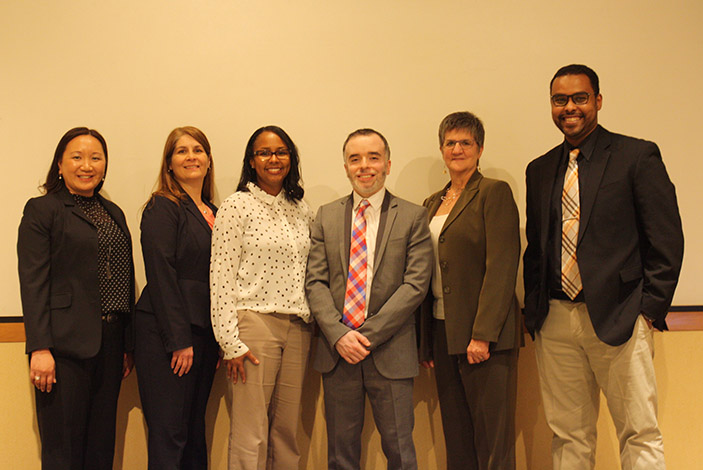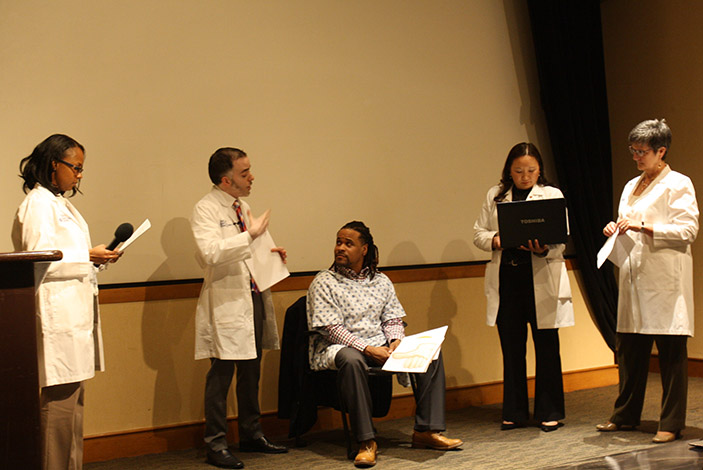Emory Saint Joseph’s Hospital director of hospital medicine Dhaval Desai, MD, Mohamed Seedahmed, MD, care management director Susan Freed, nursing unit directors Ginger Parks and Jennifer Barlow and pharmacist Dorothy Pang recently introduced the structured interdisciplinary bedside rounding program (SIBR®) at Emory Saint Joseph’s Hospital to the American Society of Quality (ASQ). The ASQ is a leading U.S. quality improvement organization, and members include executives from a variety of industries focused on providing increased customer satisfaction and promoting the use of quality principles, concepts and technologies.
The Emory Saint Joseph’s SIBR leadership team was invited to share information about the program after an ASQ member experienced this positive model of patient- and family-centered care. “My father was a recent patient at Emory Saint Joseph’s and our family experienced SIBR in a very powerful way. This program represents the voice of patient-centered care,” says Peter Sherman, ASQ program director.
SIBR involves a collaborative health care team meeting with patients in their rooms to discuss a daily plan of care. The program is conducted weekdays on four units and the intensive care units at Emory Saint Joseph’s, and includes the physician, nurse, nurse assistant, social worker, therapist and pharmacist.
During each individual visit, which lasts from four to six minutes, the physician introduces the patient to all members of the team and involves the patient in a discussion about their care. Each team member comes to rounds prepared to discuss items such as overnight events, the patient’s goal for the day, nurse’s concerns, vital signs, pain control, intake, output, mobility, medication management and discharge plans. For example, the pharmacist carries a laptop to update each patient’s medications during SIBR. If there are any changes or additional medications needed, the nurse can give them immediately. Once the team and patient have agreed upon a goal and plan for the day, the team excuses itself and moves to the next patient’s room.
During the interactive ASQ presentation, audience members learned how SIBR was implemented, and then had the opportunity to participate in the roles of patient, family member and the care team. Each participant had the opportunity to ask questions and deliver information every few minutes to illustrate how confusing it is to have members of a patient’s care team visit at different times, instead of a group visit at once.
“As patients are aging, hospitals are treating a sicker population needing more and more services and SIBR combines the concepts of efficiency and quality in patient-centered care,” says Desai.
Since the implementation of SIBR at Emory Saint Joseph’s in 2015, the outcomes from the program have resulted in short stays for patients, no delay in care and higher patient satisfaction scores due to open communication with members of the health care team.
SIBR was developed by Jason Stein, MD and refined with Bryan Castle, BSN,RN, MBA at Emory University Hospital and in addition to Emory Saint Joseph’s, has been implemented throughout Emory Healthcare.




